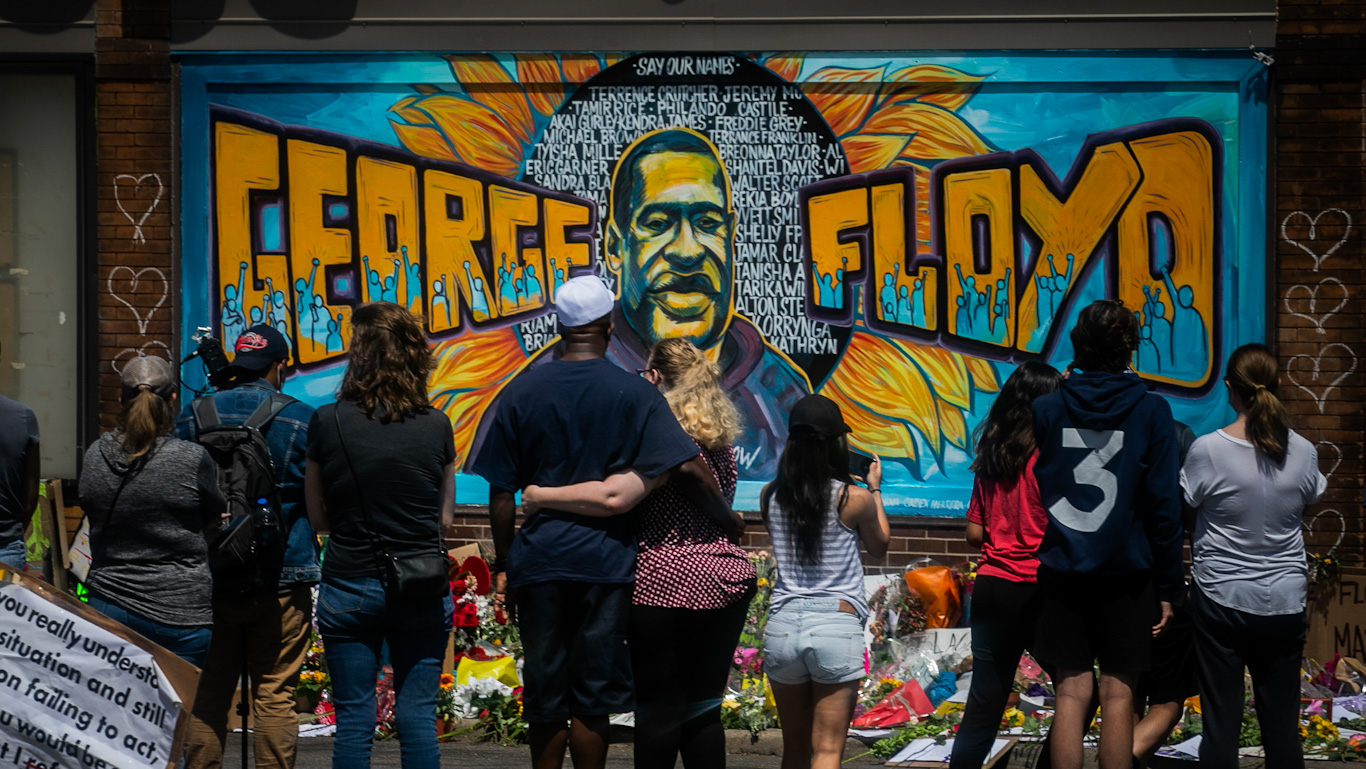American law enforcement officers have killed well over 1,000 people in 2020. Between January 1 and December 15 of this year, the Mapping Police Violence project has recorded 1,066 people nationwide killed at the hands of the police, an average of around three killings per day. Despite the fact that 2020 has brought with it a pandemic forcing Americans to stay off the streets (and, presumably, out of trouble) as much as possible, there have only been 17 days recorded this year where the police did not kill someone.
The project also compiled statistics on the racial backgrounds of the victims. Black people are three times more likely than white people to be slain by police, and more likely to be unarmed when it does happen. Eight of the 100 largest city police departments kill black men at a higher clip than the U.S. murder rate. Those eight are Reno, NV, Oklahoma City, Santa Ana, CA, Anaheim, CA, St Louis, MO, Scottsdale, AZ, Hialeah (Miami), FL, and Madison, WI. “Death by cop” is a leading cause of death for black males in the U.S., killing around one in 1,000.
U.S. police violence is off the charts in comparison to other developed countries, with homicides occurring at a per capita rate almost 70 times that of the United Kingdom, or nearly 170 times more than Japan. This puts it closer to many Latin American nations, notorious for their corrupt and militarized police departments’ heavy-handed response to drug smuggling and organized crime.
Police have killed 1,066 people so far in 2020. Source | Mapping Police Violence
May 3 was the deadliest day this year, with police killing nine men in California, Colorado, Florida, Indiana, Kansas, North Carolina and Texas. Perhaps the most infamous day came three weeks later, however, when police killed seven men, among them 46-year-old African American George Floyd.
Floyd would likely have been as anonymous as the other 1,065 names on the list had the incident not been caught on camera and gone viral on social media, causing a worldwide uproar. Video showed Minneapolis police officer Derek Chauvin pressing his knee into Floyd’s neck for nearly nine minutes until he suffocated to death, even as onlookers pleaded with him not to kill him. Floyd’s final words, “I can’t breathe,” became a rallying cry, sparking hundreds of large demonstrations nationwide. Between 15 and 26 million Americans are estimated to have attended at least one related protest in the subsequent weeks.
As a response to the demonstrations, Chauvin was arrested and charged with second-degree unintentional murder and second-degree manslaughter. He was released on bail in October. However, his situation is unusual. Mapping Police Violence’s numbers show that only 1.7% of killer cops are ever charged with a felony, and far fewer are actually convicted, meaning there are very rarely any serious negative consequences for those that do kill while in uniform.
The protests sparked a nationwide debate about the role of the police in society, with polls showing that up to 39% of the country approved of the measure to defund the police. Even more popular were actual policy proposals of removing police responsibility for situations like mental health crises and homelessness, measures that would make up the backbone of any police defunding agenda.
Despite being responsible for hundreds of brutality incidents during the subsequent protests, and hundreds more attacks on journalists, police themselves claimed to be under assault. After a police officer was killed in Washington State in July, the institution’s defenders suggested that the Black Lives Matter protests were morally responsible. “Any time the anti-police rhetoric heats up, it sends a message that it’s open season on law enforcement. We saw it in 2016 and we’re seeing it now,” a retired senior Secret Service agent told ABC News.
Yet the government’s own data does not back this up. According to the Bureau of Labor Statistics, law enforcement is not a particularly dangerous profession. Virtually any other job performed mostly outside, from construction work and gardening to agriculture, fishing, and forestry all carry far more risk of death than being a police officer. Also more dangerous are professions where driving a vehicle, such as garbage collection, delivery driving, or trucking, is a key component of the job.
BARTENDERS have a more dangerous job than cops h/t @VanguardVivian pic.twitter.com/AgYaf49aKm
— Ninja Economics (@NinjaEconomics) July 17, 2016
The 2020 presidential election was colored by the debate around police violence, with the incumbent Trump accusing Joe Biden of being in the pockets of radical anti-police leftists. In reality, however, Biden appeared hesitant to criticize the police at all, initially suggesting only that they shoot suspects in the leg, rather than in the torso. The 78-year-old Delawarean also chose former prosecutor Kamala Harris, who described herself as “California’s top cop” as his running mate, all of which suggests that it is unlikely we will see a massive drop in police violence figures come 2021.
Feature photo | In this May 31, 2020 file photo, visitors make silent visits to organic memorial featuring a mural of George Floyd, near the spot where he was killed by police in Minneapolis. Bebeto Matthews | AP
Alan MacLeod is a Staff Writer for MintPress News. After completing his PhD in 2017 he published two books: Bad News From Venezuela: Twenty Years of Fake News and Misreporting and Propaganda in the Information Age: Still Manufacturing Consent. He has also contributed to Fairness and Accuracy in Reporting, The Guardian, Salon, The Grayzone, Jacobin Magazine, Common Dreams the American Herald Tribune and The Canary.


